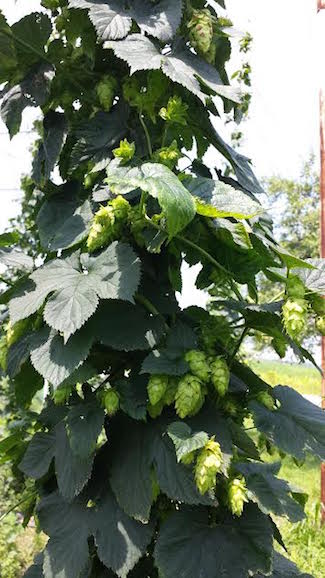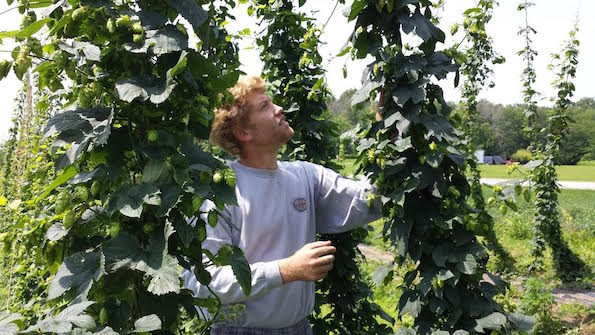 Once upon a time, 100 years ago or so, hops were a viable crop in Ohio, but pests, disease and prohibition teamed up to end Ohio’s hop production. But hops are gaining a toehold back in the Buckeye State. With the explosive growth of craft brewing in Ohio and the high hop requirements for many craft beers, there is a growing demand for more US hop production. Add to that the ‘Buy Local and Drink Local’ movements, and it only make sense to see hops make a comeback as a cash crop here in Ohio.
Once upon a time, 100 years ago or so, hops were a viable crop in Ohio, but pests, disease and prohibition teamed up to end Ohio’s hop production. But hops are gaining a toehold back in the Buckeye State. With the explosive growth of craft brewing in Ohio and the high hop requirements for many craft beers, there is a growing demand for more US hop production. Add to that the ‘Buy Local and Drink Local’ movements, and it only make sense to see hops make a comeback as a cash crop here in Ohio.
Mike Ford of Marysville is among those hopping onboard with his four acre hop farm, Grandpop’s Hops. While four acres may not seem like a lot, it actually makes him one of the largest hop producers in the state. According to the USDA, in 2014 Ohio had a grand total of 30 acres dedicated to hop production. The dominant varieties at Grandpop’s Hops are currently Cascade, Columbus, Zeus, Glacier and Nugget, with several additional hop cultivars being grown in smaller numbers. In addition, Mike is experimenting with a total of 26 different hop varieties to better understand their potential and suitability for local production.
The support network for Ohio hops is growing as well. The Ohio State University and its Ohio Agricultural Research & Development Center in Wooster are providing seminars and support for this burgeoning industry. There is also a new coalition of hop growers called the Ohio Hop Growers Guild that allows the members to network and learn from each other.
It’s no small investment to start a hop farm. Most sources estimate that it costs about $10,000/acre to start up. The hop bines can grow up to 25′ high, so heavy cables are strung between telephone poles and then twine dropped from the cables for the bines to climb. On top of that, it takes several years before the hops are fully productive, so there’s some serious upfront work and investment without any short-term income. Mike planted his hops last year, and should see some limited production this year, but it will be another year or two before he reaches his planned 12,000 pounds of hops produced.

Mike is in conversation with a number of area breweries about providing fresh hops, such as Heath’s Homestead Brewing, who is interested in wet hopping with Grandpop’s Cascade hops. Mike will also be making the fresh hops available to local homebrewers. Right now, he doesn’t have the capability to pelletize his hops, but he does plan to build a drying oast to preserve the hops later this year.
Mike makes it clear that this is just the beginning; Over the next several years, he plans to have 10–12 acres of hops, and in the longer term, as many as 60 acres. And maybe — just maybe — a small on-site brewery.












